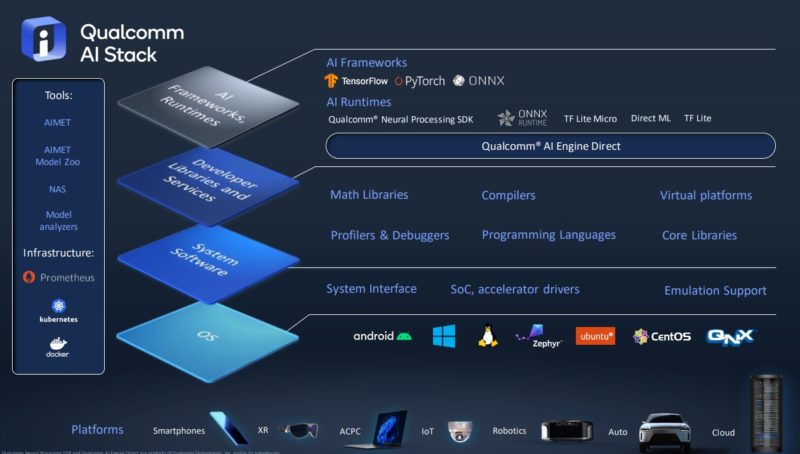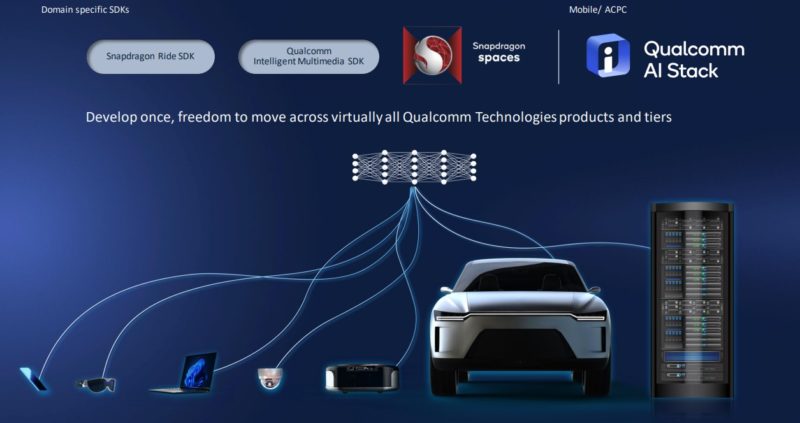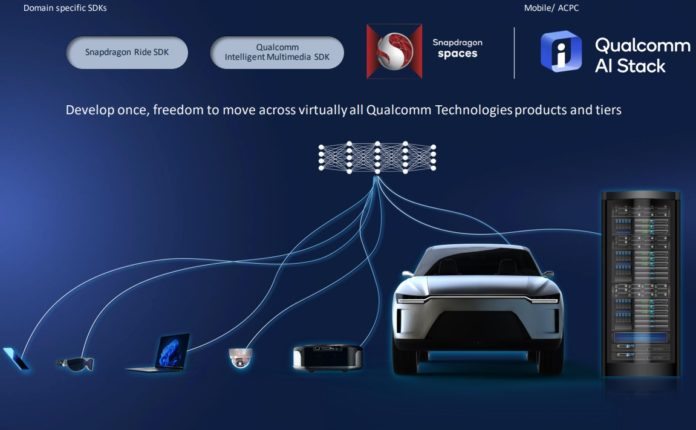Today Qualcomm is announcing its AI unification offering. The Qualcomm AI Stack is designed to allow developers to build software that works across the company’s silicon offerings. This is a feature many other companies already have been working towards, but Qualcomm has a unique set of silicon solutions.
Qualcomm AI Stack Aims to Achieve Parity with NVIDIA Intel and Others
The basic idea behind the Qualcomm AI Stack is to unify some of the front-end SDKs for developers. Most of these AI frameworks, like CUDA for NVIDIA, OneAPI for Intel, AMD AI Stack, and so forth, are to allow programmers to work in environments like TensorFlow and PyTorch and then optimize and run on many different silicon platforms. Qualcomm has markets that tend to be focused more on edge devices. As a result, the AI Stack is designed to help applications run across different segments.

One of the fun features of the Qualcomm slide is that it still has CentOS. Red Hat Goes Full IBM and announced it would discontinue CentOS in 2020 and finally discontinued CentOS many months ago. We have not seen many recent software announcements trumpeting CentOS support because of this.
An example of where this may be used is that a facial recognition application may be built to unlock a device. Qualcomm’s AI Stack will then help make that application run on the company’s chips in phones, ACPCs, and perhaps even automobiles.

Most AI companies are working on some sort of abstraction, but many silicon vendors that have broad portfolios realize they need unified software tools to help cross-platform sales. Intel is a great example of this where they are enabling AI across a range of architectures, form factors, and platforms. Intel started on its OneAPI journey years ago, and it is still ongoing. NVIDIA has offered CUDA tools to make this a baseline capability for years. Developers working in NVIDIA CUDA can run software on the company’s supercomputer GPUs all the way down to <$100 Jetson embedded devices.
Final Words
Overall, this is the right direction for Qualcomm. The company needs something like this to remain competitive in AI, especially as it targets customers that are using different types of chips. In the future, the vast majority of computing devices will have some sort of AI acceleration but the diversity will necessitate tools like this.





My opinion is definitely colored by Qualcomm’s behavior on the Android side; but they are perhaps the company I’m least surprised to see touting an OS that is significantly out of support.
I get that this is an automotive and long-term Nuvia play, but I have no faith that Qualcomm will execute or deliver in this area.
Might have to license Qualcomm’s modem IP before you’re able to even view the documentation.
The tech industry’s trend towards esoteric posturing, fluff, and aspirational marketing continues to be obnoxious. This press release that announces mere “aims to achieve parity” has diminutive impact and merit compared to a hypothetical announcement where Qualcomm had “RELEASED an AI stack that HAS achieved parity;” now that would be substantial and newsworthy. Presentations like this are becoming endemic to tech companies, notably Intel which seems to be “biggering and biggering” events that present mere roadmaps, often touting products that are not to arrive for half a decade, or more. These companies have products today, so the most perplexing part is that transitioning from a “right direction” to a “right result” announcement cadence would take at most a single product cycle, and it seems like investors would be more willing to juice stock prices if companies were huffing and puffing about tangible results, rather than some hypothetical “direction” (since that is what this is really about). Perhaps the end goal is getting twice the bang-for-your-buck, in that you can pad out two or three of these all-important, anaemic, empty presentations with a single product from concept, to execution, to an actual release?
Best regards to the STH team!